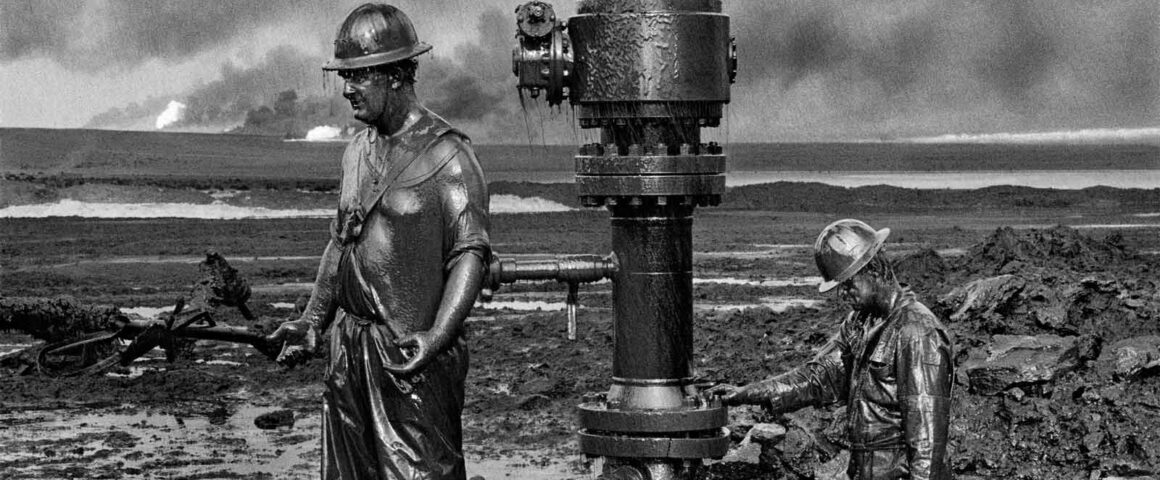“Suffering is what was born. Ignorance made me forlorn. Tearful truths I cannot scorn” — Allan Ginsberg
Co-directed with Juliano Ribeiro Salgado, Wim Wenders’ (“Pina”) The Salt of the Earth chronicles Brazilian photographer Sebastião Salgado’s essays shot over a period of thirty years in one hundred different countries. Winner of the Special Jury Prize at Cannes in 2014 and one of the five Oscar-nominated films for Best Documentary, the film documents the reality of war, poverty, famine, and deforestation in human terms, captured in indelible photos by a man who has been called the most important photographer of the 21st century. Salgado’s work is without exploitation of human misery, only a respect for the humanity of those caught in the middle of tragic circumstances.
Born in Brazil in Aimorés in the State of Minas Gerais, Salgado received a Master’s Degree in Economics from the University of Sâo Paulo but left his native country for France in 1969 after a coup installed a military dictatorship. In France, he intended to pursue a career in economics but his life was changed when his wife Leila recognized his unique talent and urged him to invest in photographic equipment. While the film does not explore Salgado’s relationship with his wife and two children, it does touch on their feelings when their second son, a special needs child was born. It also makes clear that Juliano, Sebastião’s oldest son who later joined him on a ten-year project, grew up mostly without the presence of his father in the home.
Salgado’s career began in 1973 in Niger, Africa, but the film opens with a collage of photos taken at the Serra Pelada mine in Brazil in the 1980s as part of his “Workers” series. Photographed entirely in black and white, the images show 50,000 men laboring at an enormous mining pit, a scene he describes with deep emotion. Commenting on the photos as they are projected onto a mirror that allows us to see both the artist and his art, Sebastião is an articulate guide to the events. The vast numbers of workers were not slaves, he says, but were “slaves to the cause of getting rich.” Observing the scene, he shared that “every hair on my body stood on edge,” and he felt as if he “had traveled to the dawn of time.”
Salgado’s first major series was called “The Other Americas.” Shot from 1977 to 1984, the project took him to Latin and South America in countries such as Mexico, Peru, and Ecuador (not Brazil). With a vivid memory for details and a natural ability as a storyteller, Salgado talks about the Tarahumara, a Native American people of northwestern Mexico renowned for their long-distance running ability whose existence is now threatened by drug trafficking. He also recollects how the Saraguros, an indigenous people living in the southern highlands of Ecuador, thought that he was an ambassador sent from God to make sure they were living upright lives.
Working with the humanitarian organization “Doctors Without Borders,” the film chronicles how Sebastião undertook a fifteen-month project of recording the drought-stricken Sahel region of Africa in the countries of Chad, Ethiopia, Mali, and Sudan, where approximately one million people died from malnutrition and related causes. After witnessing the disaster in the Sahel, he turned his camera to the burning oil wells of Iraq, fires set by Saddam Hussein at the end of the Gulf War. After he witnessed the genocide in Rwanda during the 90s, Salgado reached an impasse in his life. “My soul was sick,” he recalls. “I no longer believed in anything, in any salvation for the human species.”
The Salt of the Earth, however, is not a film of despair but one of redemption. When Salgado returned to the land in Brazil where he grew up, the task of reclaiming the land from deforestation and drought seemed overwhelming but became the catalyst for his personal transformation. Sebastião and Leila created the Instituto Terra, dedicated to replanting over one million trees to restore the balance of nature in the Atlantic Forest. The success of the project allowed him to return to photography and begin his final series entitled “Genesis” in which he documented arctic and desert landscapes, tropical rainforests, marine and other wildlife, and communities still living according to ancient traditions.
While Salgado’s words are inspiring, the images conveyed by the photographs are what gives the film its astonishing power. His photos are a stinging protest of the disparity between the haves and the have-nots all over the world. “The planet remains divided,” he said. “The first world is in a crisis of excess, the third world in a crisis of need.” The magnificent body of his work underlines this sad reality.




'Movie Review: The Salt of the Earth (2014)' has no comments